Taking dogs for walks is a great way to bond with both dogs and their owners. But managing their movements can be a daunting task if you're not putting them on a leash. It may be a great confusion for you to decide between a dog harness vs collar. While a traditional dog collar puts a lot of pressure around your dog's neck, a harness provides easy control over the movements.
No matter what you choose, you must prioritize your fur baby's health over anything. It is essential to make the right choice when selecting a dog harness or collar.
Though collars have been a staple for taking your fur babies for walks, times have now evolved. Harnesses have entered the market that offer a sense of freedom to your dogs, while also providing you with control over their movements.
Besides, a well-fitted harness can also keep your dog safe from running into the streets with heavy traffic.
This blog will answer the question: Is a harness better than a collar? In addition, you will learn the pros and cons of both options to make an informed decision.
What Is A Dog Harness and A Dog Collar?
Dog parents wonder between a dog harness vs a dog collar, which is the best choice. Let's first understand what a dog harness and collar are. A dog harness is an effective training tool to keep your dogs safe while they are enjoying their walks on the patio, playground, or roads.
Designed for dogs, harnesses cover the shoulders, back, and chest. They ensure the even distribution of your pet's body without creating any pressure on the neck. A dog harness provides better control when your fur baby takes a few steps ahead of you.
A dog collar is a popular mechanism for controlling your dog's movements. A dog collar is a loop-like safety tool that fits around your pet's neck. On a collar, you can attach leashes and ID tags to prevent your dogs from getting lost.
Even if they do get out of the house, the ID tags attached to flat collars can help you find them. Moreover, ensure that a scenario like this should never occur.
Dog Harness vs Collar: The Pros and the Cons
It is a critical move to compare dog harness vs collar. However, comparing advantages and disadvantages can help you make the best choice.
The primary difference between the two tools lies in their design and functionality. A harness supports the upper back, chest, and shoulders of your adorable pet. On the other hand, a collar offers a clasp or buckle that wraps around your pup's neck.
Dog Harness

Let's check the pros and cons of a dog harness.
Pros:
1. A dog harness evenly distributes the pressure over a large surface area of the body. The surface area includes the chest, shoulders, and upper back. When you put a well-fitted body harness on your pet, it prevents back pain.
2. Harnesses fasten around your dog's body. It means more safety and security, ensuring your pet doesn't slip out.
3. For small dogs and puppies, harnesses are often a better option. As harnesses provide coverage to your pet's entire body, they help puppies with support for walking.
4. So, is a harness better than a collar for a puppy? The answer is yes!
Cons:
1. It takes time to put a dog harness on. And if your dog is a mischievous one, it will seem like a daunting task. Allow your dog time to get accustomed to the harness and then slowly tie it around its back.
2. Harnesses are quite bulky due to their design. Hence, you need to get your puppy familiar with the tool gradually.
Dog Collars

Dog collars have several pros and cons. Let's check them out.
Pros:
1. Dog collars are lightweight and can be put around the neck of your fur baby very easily. Also, collars don't restrict the body movements of dogs.
2. They are a convenient option for everyday use. Using martingale collars can provide better support for restless dogs. These collars tighten when your fur baby pulls, thus preventing choking.
3. Dog collars are ideal for holding leashes and ID tags.
Cons:
1. Collars seem like a bad choice for dogs with neck problems or sensitive skin.
2. If your dog walks very fast or pulls on the leash frequently, the collar can cause neck injuries. It can also strain their throats, which is why you can fit a martingale collar around them to prevent this from happening.
Choosing the Right Harness: Types and When to Use Them
A common question that crosses every dog parent's mind: How to keep the dog safe during a walk on a busy street? The answer is a harness around their backs. Collars are also popular options for dog safety on roads. Still, they can be uncomfortable around the necks, especially if your fur baby has sensitive skin.
In such scenarios, a dog harness seems to be a better choice. It distributes the pressure evenly over the surface areas, such as the chest, shoulders, and upper back, providing your dog with better support.
Various types of harnesses can fit your dog well. Each harness is unique from the other.
The following are the common types of harnesses for your dogs' ultimate safety while walking on the roads.
Back Clip Harnesses
It is a kind of harness that is well-suited for dogs that can walk on a lead. Back clip harnesses are pretty common, featuring a D-ring. The ring usually sits on the center line of the back of your dog.
Dogs that are usually calm can benefit from walking them on a back-clip harness. However, if you have a restless dog, these harnesses may not be the best option.
Front Clip Harnesses
Also known as no-pull harnesses, its functionality is quite the opposite of the one mentioned above. Instead of having a D-ring on the back, it is on the chest region. You have to clip the leash to the D-ring around the chest.
Dogs that tend to pull while walking on the street, these harnesses work like magic. The harness shifts the leverage point. When the dog tries to pull away from you, the harness makes it move toward you so that you don't lose the grip.
Dual Clip Harness
Do you have a dog that's constantly yanking the leash while walking? Then, consider getting a dual-clip harness. The harness features attachment points on both the front and back.
A mechanism like that ensures providing flexibility to different training needs and walking patterns. It is a practical design for dogs that require more control during their training phase. Furthermore, they are great for casual walks.
Y-Shaped Harnesses
The front of this harness takes the shape of the letter Y. Therefore, this harness is commonly known as a Y-shaped harness. Finding the right Y-shaped harness can provide greater flexibility for your dogs, particularly in the shoulder region, when you take them for walks. These harnesses will sit on your pet's sternum.
It can cause damage to your dog's neck if the Y sits too high, just like a collar. And if it's too low, it will obstruct the dog's natural steps.
Step-in Harnesses
Many dogs don't like things wrapped around their heads. If you have a fur baby like that, step-in harnesses are your best choice. It is a combination of two types of dog harness: a back clip and a Y-shaped.
Dog parents will lay the harness on the ground and make the little ones step on it. Put your dog's front paws through the two loops, and hold the straps up. Finally, buckle it around the dog's back.
Which Dogs Benefit Most from Wearing a Collar?
Collars have always been a popular choice for controlling dogs' movements. Since traditional collars had their drawbacks, new designs have emerged, including the martingale collar.
The two-loop design of the collar offers both comfort and safety to your dogs. Many small and large dogs benefit from these collars. Buckle collars are an excellent fit for dogs that don't tend to pull when taking their casual walks. But for the runners, martingale collars are a perfect fit.
There are many large dogs with slimming heads for which martingale collars can be an ideal option. The large dog breeds are:
-
Azawakh
-
Ibizian Hound
-
Whippet
-
Silken Windhound
-
Saluki
-
Borzoi
We know that collars fasten around the necks and small dogs have sensitive tracheas. While a buckle collar may not be the best choice, you can opt for a martingale collar for your small dog. These collars will put minimal pressure around the neck only when they try to slip out.
The small dogs that benefit from martingale collars include:
-
Pomeranian
-
Lhasa Apso
-
Shih Tzu
Additionally, you can check out the top hands-free leashes to make the most of the walks with your cute pups and dogs.
Which Dogs Should Use Harnesses?
Can't decide between collar or harness for a puppy? Go for a harness, anytime! Harnesses are great safety and control tools for dogs with specific needs and characteristics. Additionally, they are helpful for puppies.
Unlike collars that open up in the neck region, harnesses fasten around the chest or upper back. The pressure is thus equally distributed, allowing them to move freely. Puppies and small dogs tend to have more sensitive necks and shoulders than adult dogs. Putting them on harnesses will provide them with comfort while keeping them on track during their city tours.
Harnesses are also better for dogs that walk on a lead. A back-clip harness can provide support for dog parents whose dogs walk on a lead. Dogs with a tendency to pull while walking are a perfect match for front-clip harnesses. The harnesses open up in the chest area, and when they try to pull away from you, the harness will redirect their movements.
Additionally, dog owners with brachycephalic breeds can use harnesses to help manage their pets' behavior. Dogs from the brachycephalic family feature large necks and shorter muzzles. Having a collar around their necks can restrict their movements and also cause damage to the region.
Overall, in a dog harness vs collar comparison, most dog parents choose the former option. The following are the breeds that benefit from collars (both small and large dogs):
-
Maltese
-
Bull dogs
-
Chihuahuas
-
Boxers
-
Chinese Crested
-
Toy Poodles
-
Pugs
-
Boston Terriers
-
Yorkshire Terriers
-
Italian Greyhounds
Are Dog Harnesses Better Than Collars?
Wondering are dog harnesses better than collars? Well, in many scenarios, yes. A Dog harness is better than a collar in terms of providing more flexible movements to the pets.
Small dogs and puppies have delicate tracheas. A collar puts entire body pressure on the neck region and causes them to choke. That's not something any pet parent would want.
To ensure the pressure is equally distributed throughout the surface area, go for harnesses. Besides, with so many variations of harnesses, it won't be tough to find the right match for your pet.
You can train your dogs more effectively with harnesses, as they don't create unnecessary pressure in a particular region.
A well-fitted harness can give your dog the freedom to move with you, allowing them to have control over their movements.
With a harness, dogs can experience fun and comfortable walks. The comfortable the walks are for your dogs, the better the bond between you two.
As your dogs are well-developed and trained, you can transition to collars. These mechanisms are easy to put on your furry babies. But ensure you choose the right size for the collars.
Why Choose a Dog Harness for Comfort and Safety?
Outdoor fun, long walks, and most importantly, comfort are what every pet parent wishes for their adorable pups and dogs. By choosing a harness, you can improve the outdoor life of your dogs.
Collars are indeed easy to put on and convenient, but dog harnesses also come with their range of benefits.
Let's explore why harnesses are a more comfortable and safe choice than collars.
Offers Better Control Over Your Pets
Control is vital when you're training a puppy or navigating your adult dog in a busy street. A dog harness allows you to have control over your furry friend. Different harnesses have different attachment points, allowing you to control your dog's movements without making them feel scared.
For reactive dogs and those with high energy, harnesses are a better fit.
Avoids Neck and Spine Damage
It is very common among dogs to pull and lunge during their walks. Often, it leaves pet parents frustrated and worried. Using a traditional collar can put extreme pressure on the neck. Potentially, that can lead to spinal issues, collapsed trachea, neck injuries, or strain.
The conditions are quite common among small dog breeds. As you already know, a harness will distribute the pressure throughout the body. Hence, they are suitable for providing flexible movements while minimizing the risk of neck and spine damage.
Safer During Travel
While taking your dog for an outdoor activity in a car, you can clip the harness to the seatbelt. During sudden stops, the harness will secure your pet from accidental falls.
Your curious and excited pet may jump out of the car when it comes to a stop. A harness will make sure that it doesn't happen, as you will have control.
Minimizes Pulling Tendency
The front clip or anti-pulling harnesses are best in redirecting the dog's movements. The D-ring sits on the chest, which forms a leverage point. Whenever your dog tries to slip out, the harness will move it backward towards you.
Using these types of harnesses will allow you to discipline your dog politely without resorting to harsh punishments. Gradually, the harness will train your dog to stroll, making it an enjoyable experience for your furry companion and you.
Gives a Comfortable Walking Experience
Harnesses tend to be comfortable for the dogs. Depending on the dog breed and its structure, you need to get the correct size harness. Go for harnesses that come with adjustable straps. It will enhance your dog's comfort when you take long walks together.
Provides Additional Support to Dogs with Mobility Issues
Pet parents who have dogs with mobility issues can use a harness for additional support. Harnesses are generally locked on the back or chest region of your dog.
If you have a dog with disability, the harness will wrap around the core regions, enabling them to move easily.
Dog Harness and Collars: Which One Is Safe For Your Puppy?
Choosing between a dog harness vs collar depends on various factors. These factors include the dog's breed, size, training needs, and walking patterns.
Collars are undoubtedly a popular tool for walking your dogs, but they cause pressure on the trachea region. As a result, most people have shifted towards harnesses.
There are numerous harness variations to choose from that cater to your dog's specific needs. Remember, regardless of your puppy or dog's size, choose the right size for the harness or collar to ensure a proper fit.
At Dogistry, you can find the necessary accessories for your dogs. We have a range of designer dog harnesses that you can put on your puppies and adult dogs. Additionally, we are offering bundled sets with harness, leash and poop bags to make the training and walking experience soothing.
Discover our dog-friendly safety features for enhanced training and enjoyable walks.






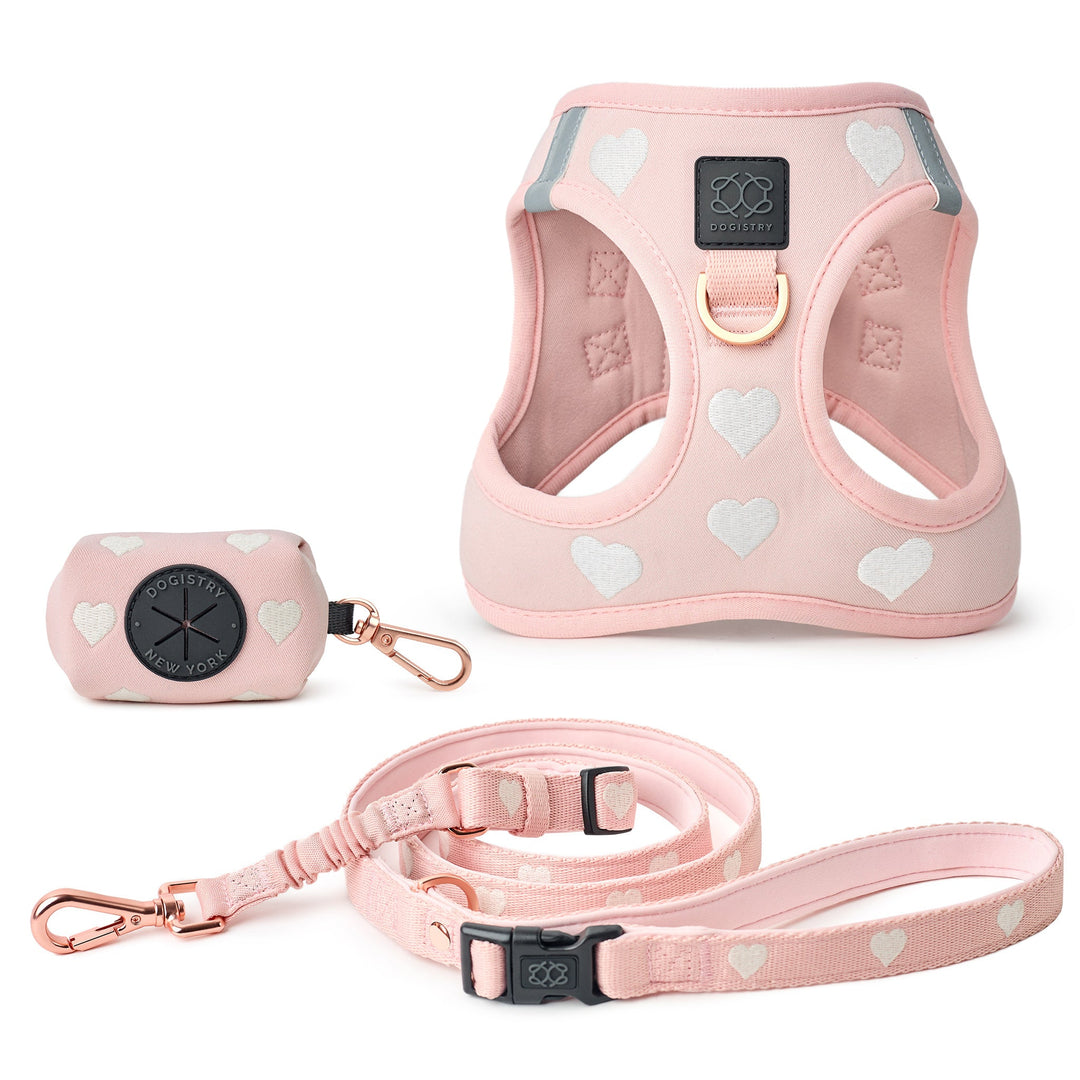
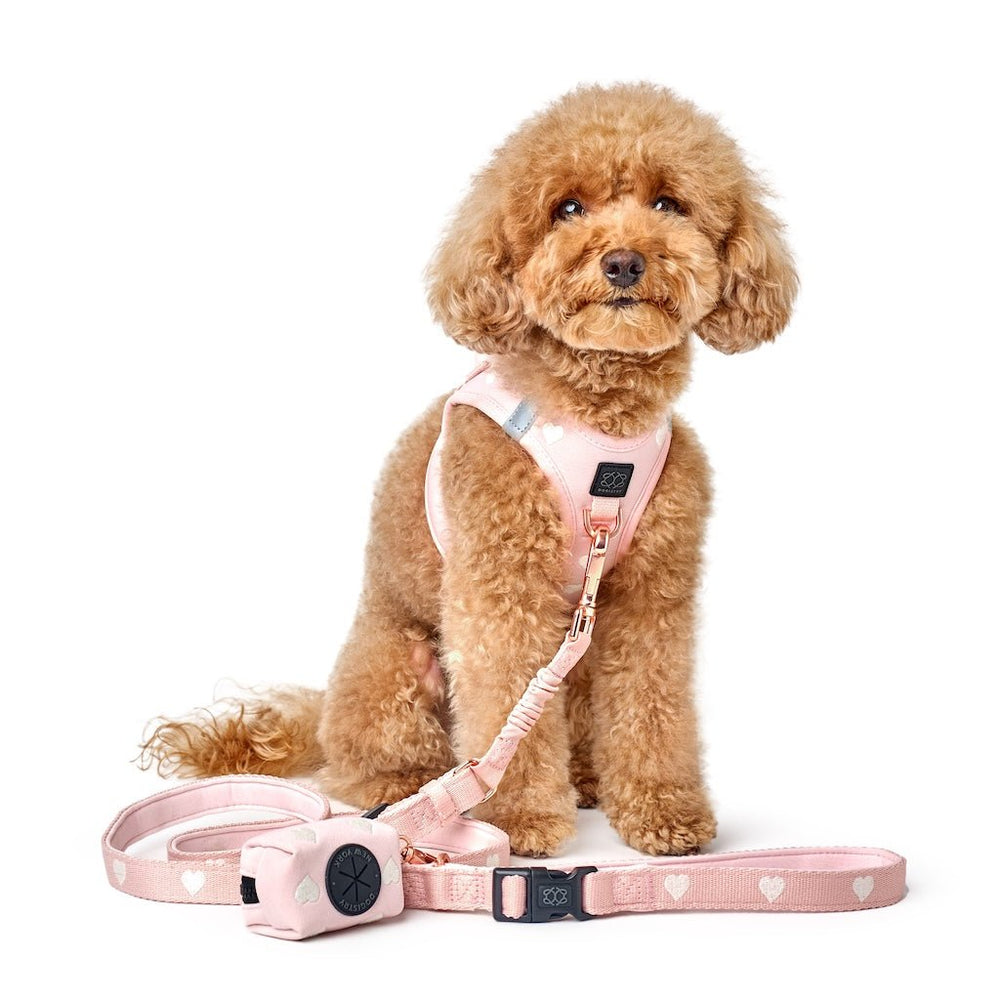
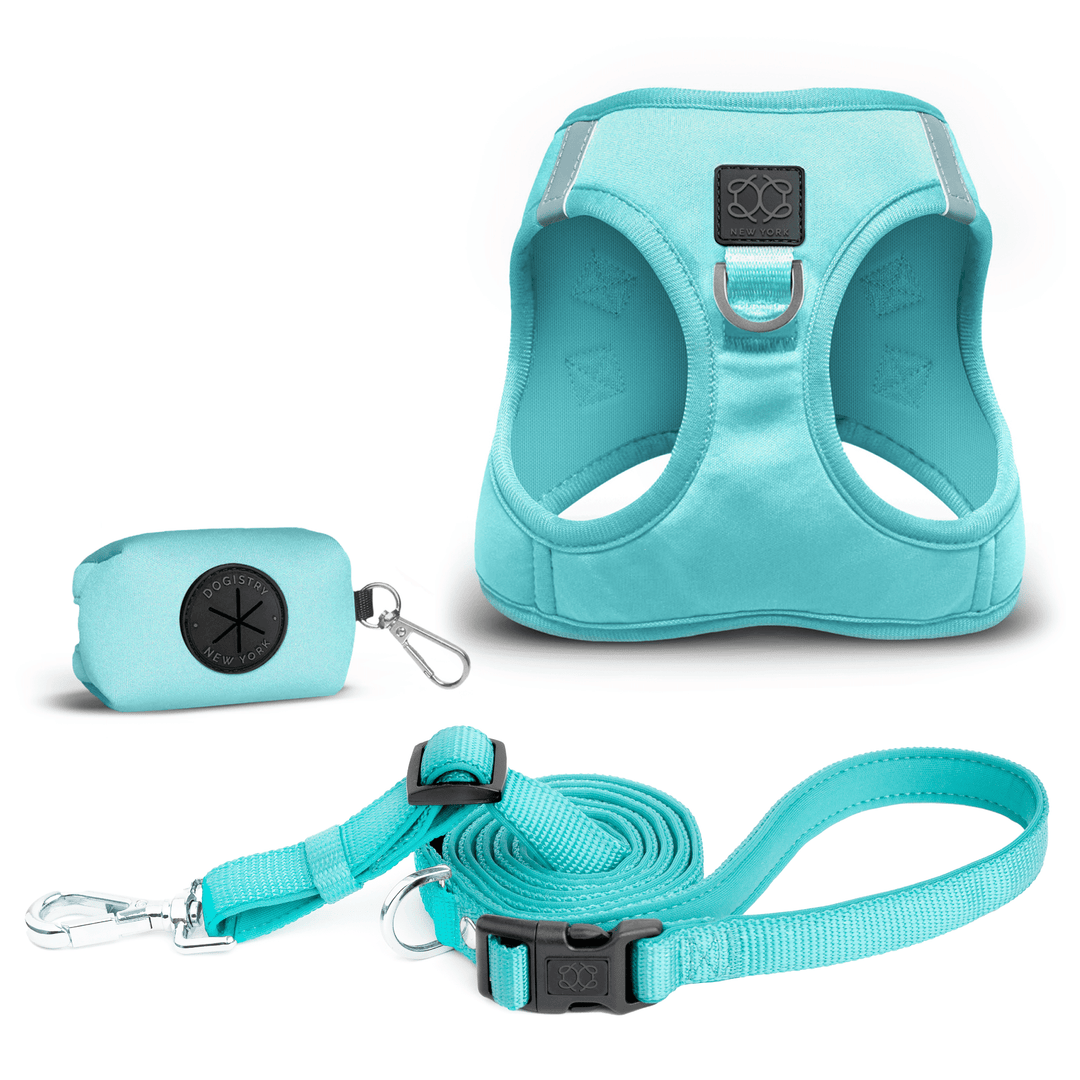
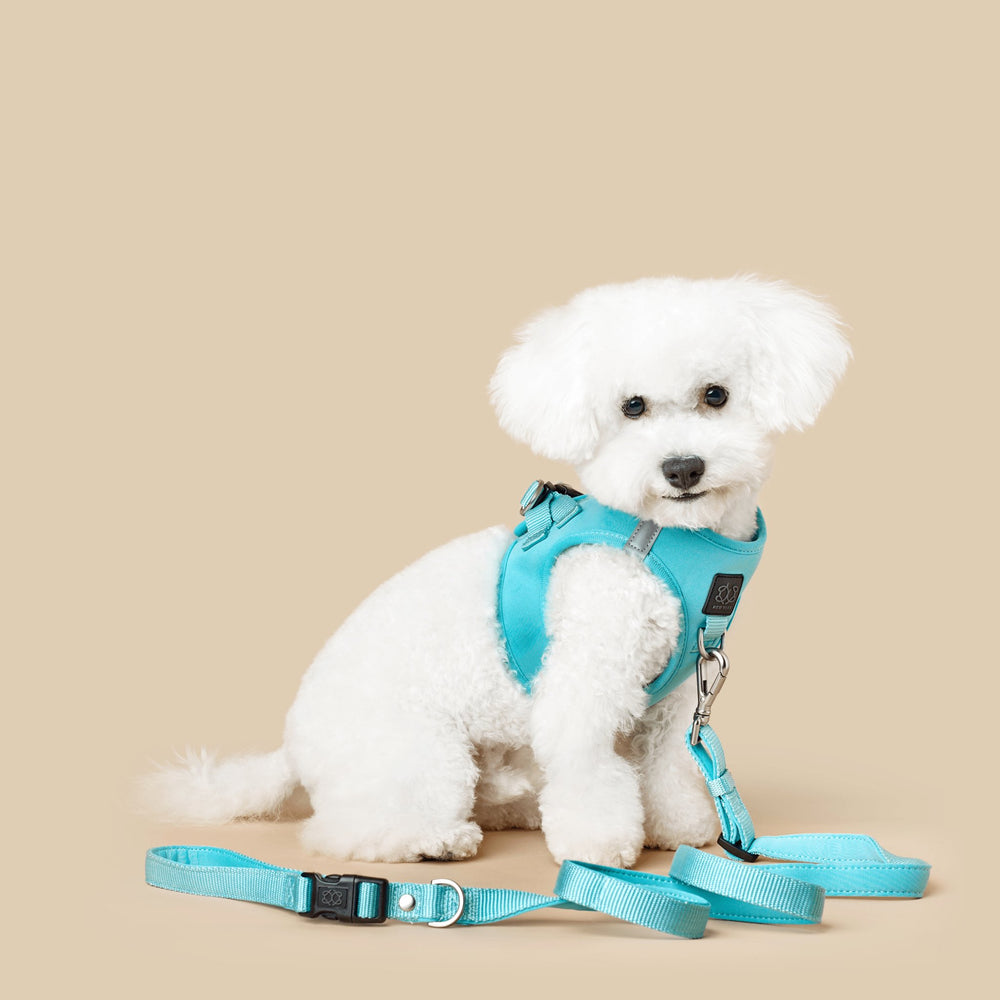
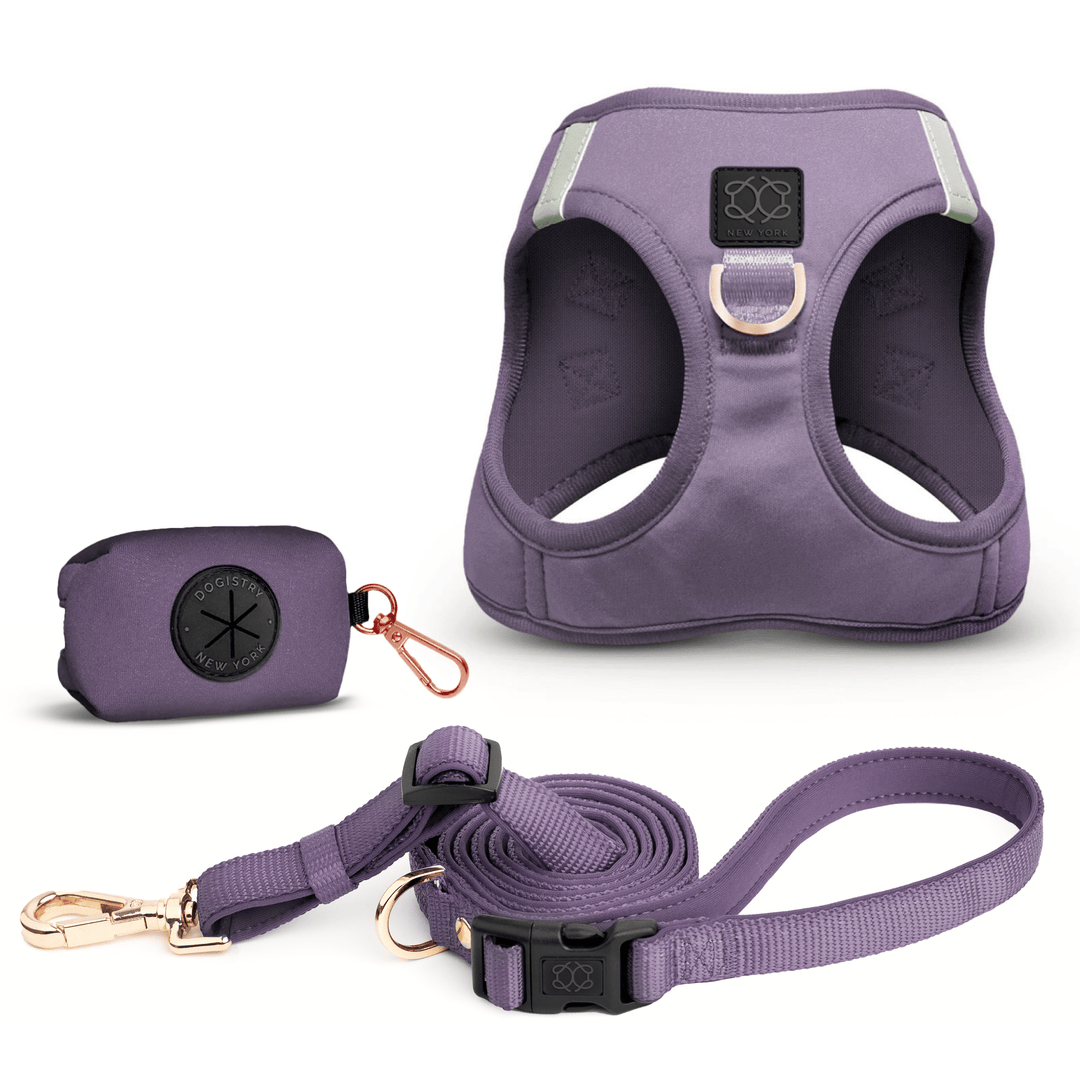
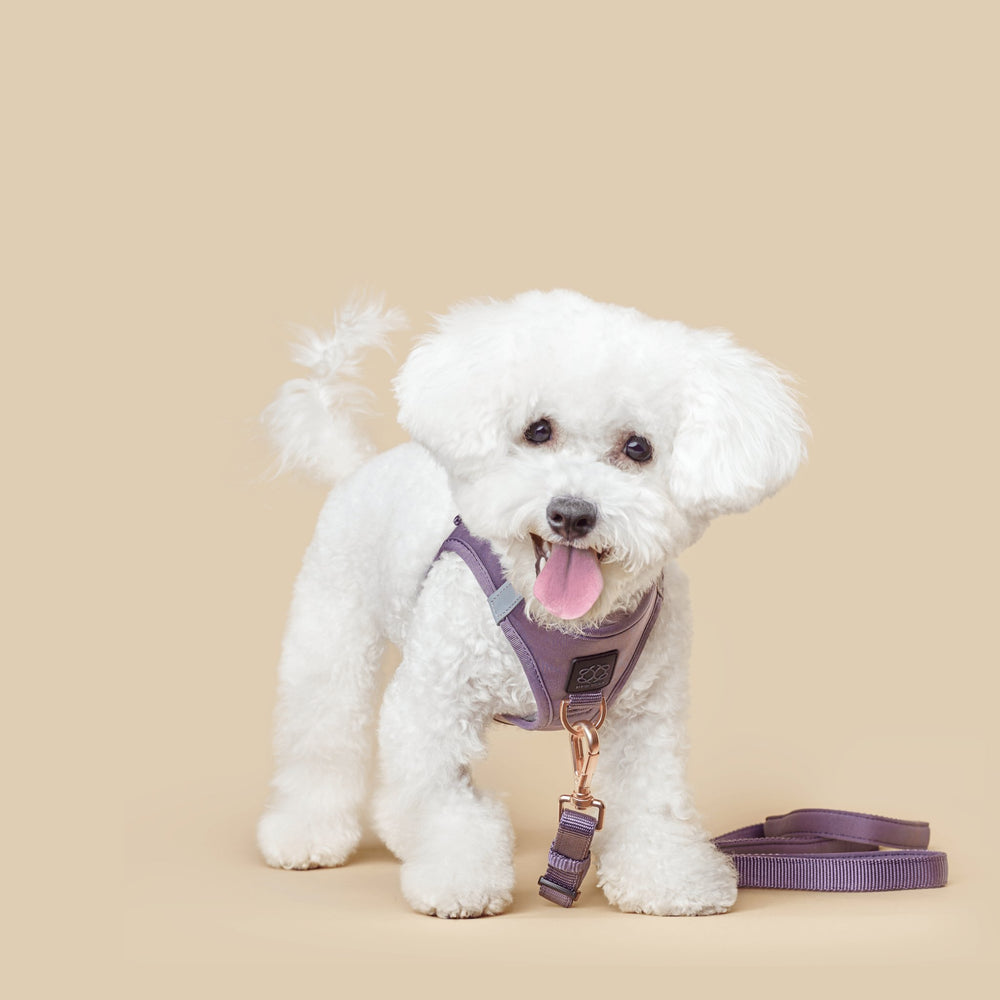
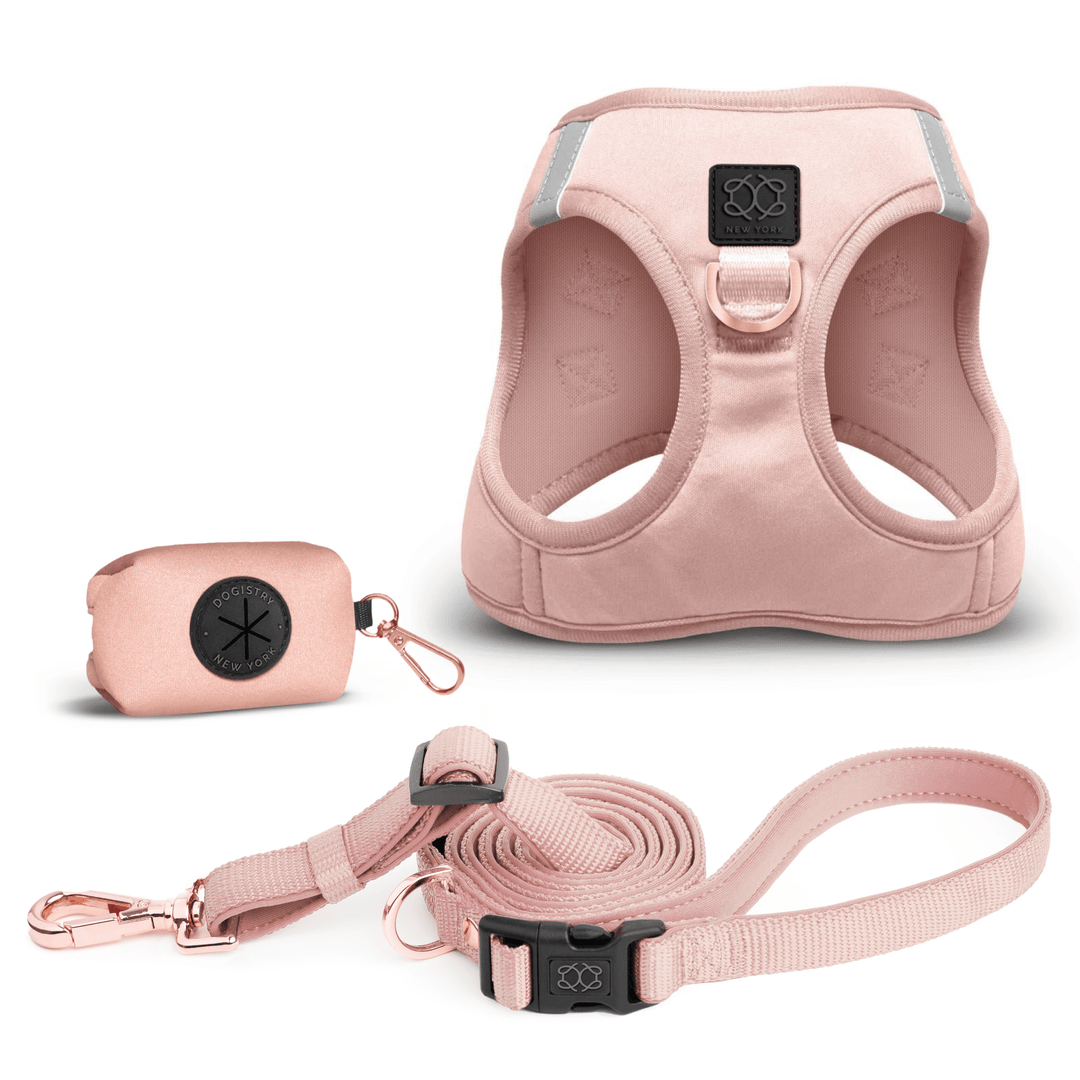
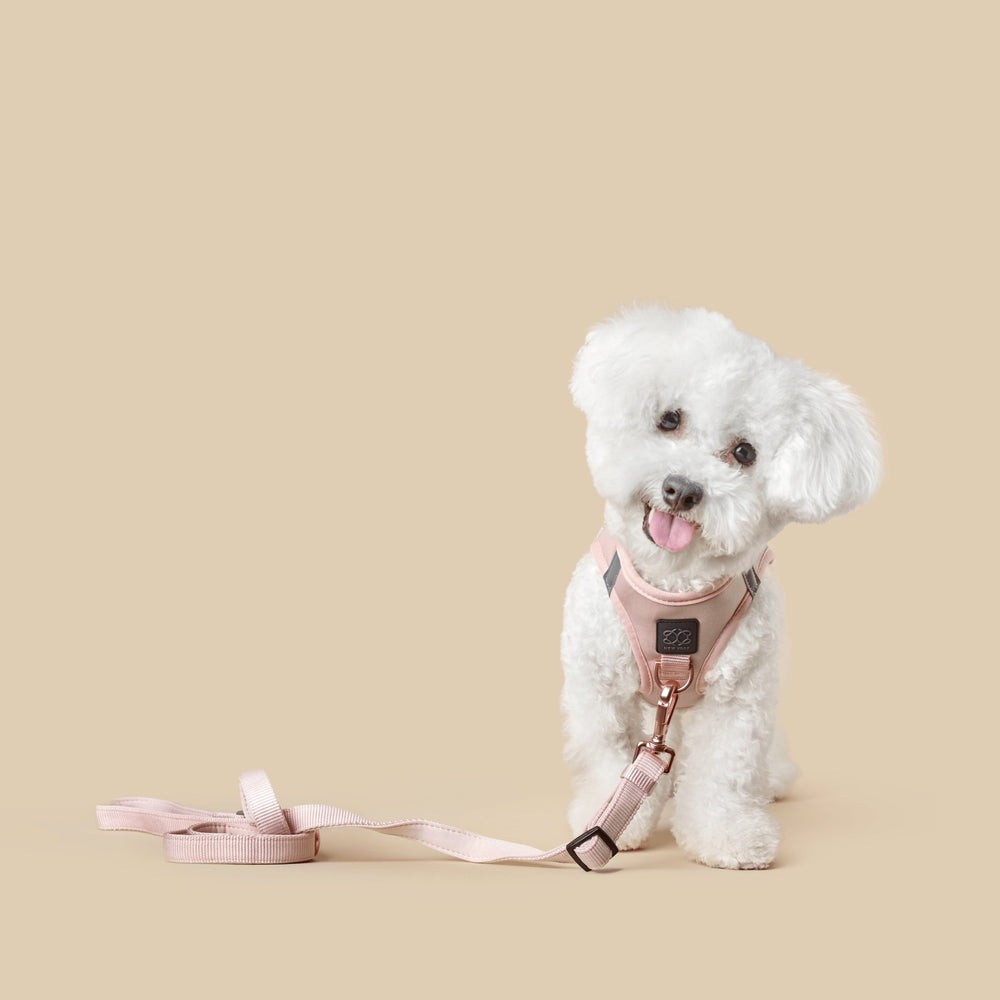
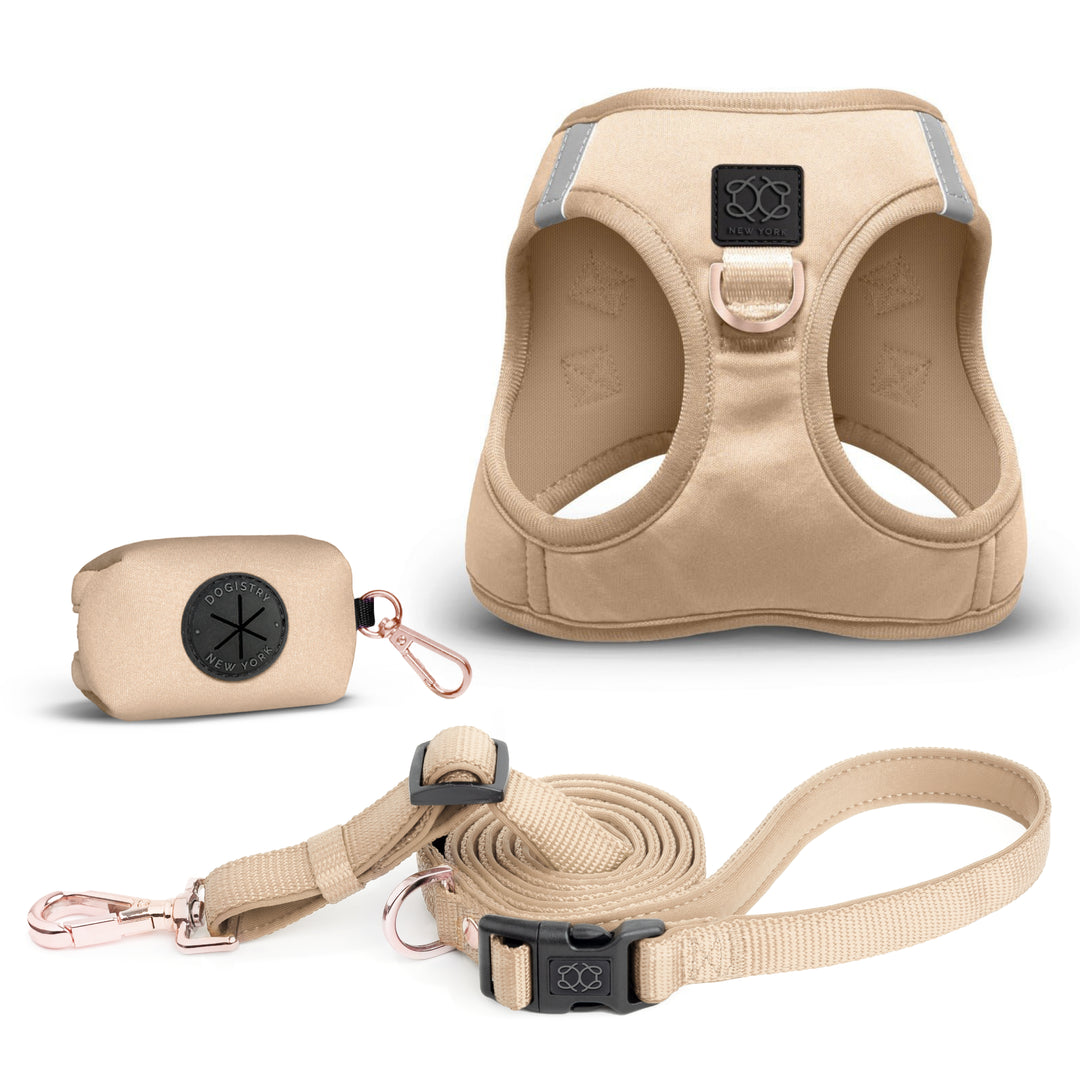

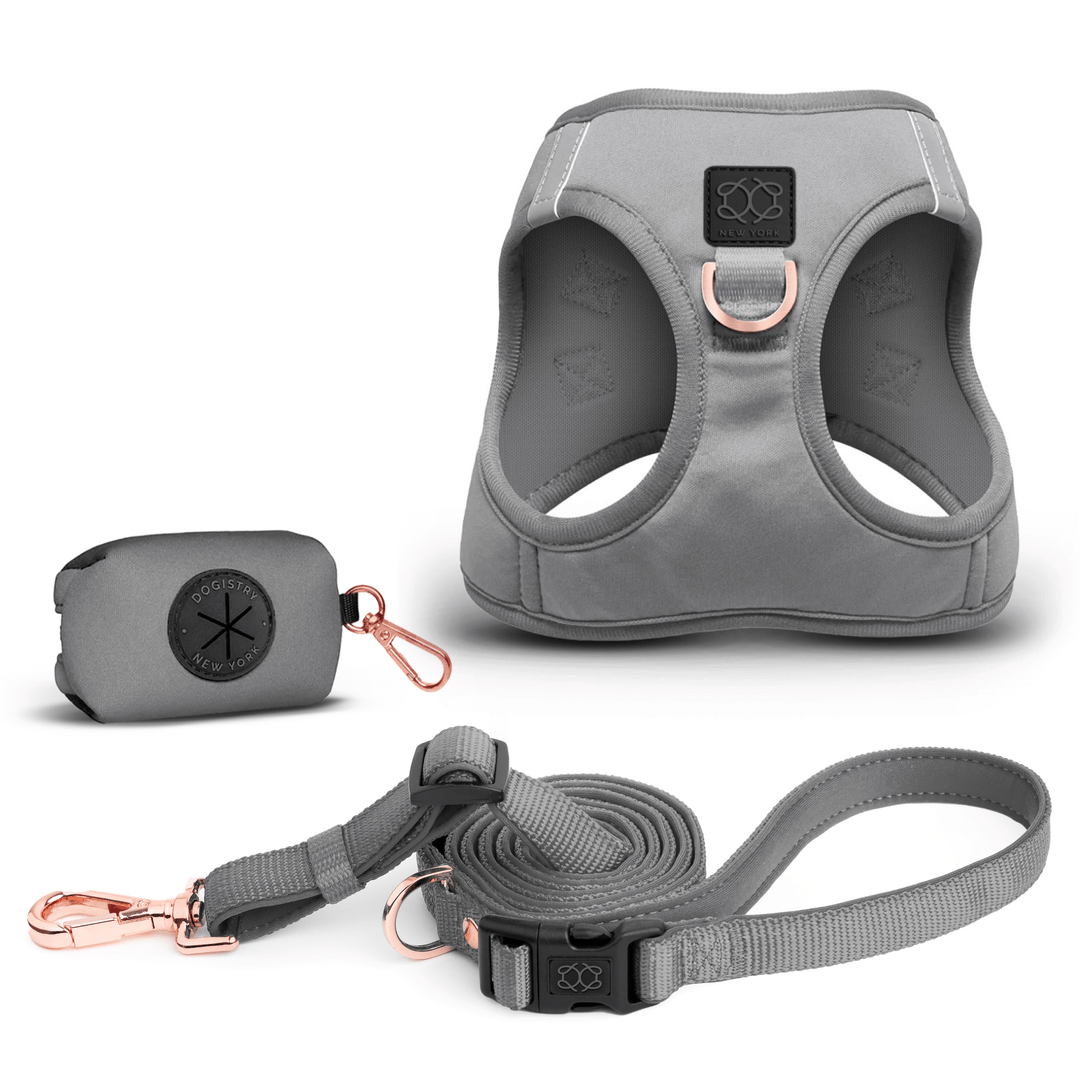



Leave a comment